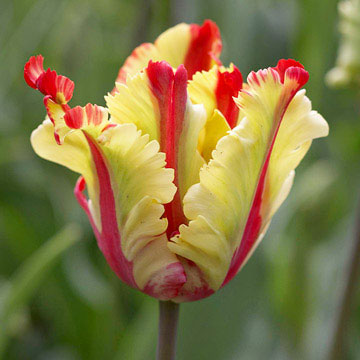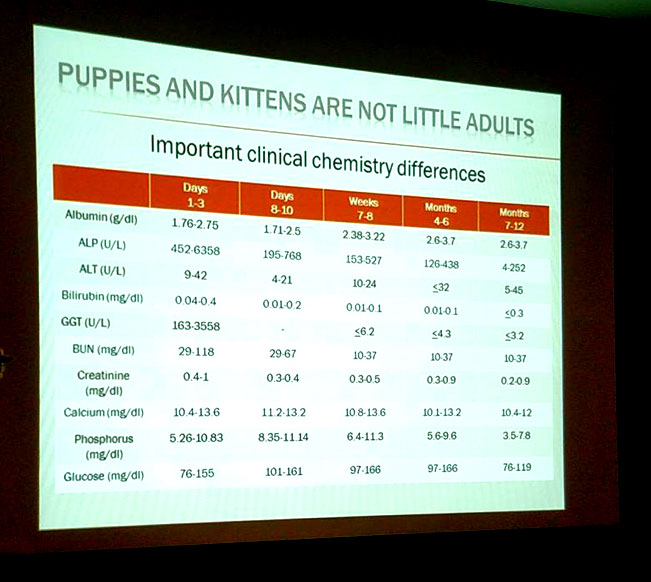Page 12 < previous page > <next page>
SOME HEALTH & SCIENCE NEWS

LIST OF TOXIC PLANTS BY COMMON NAME
------------------------------------------------------------------------
Alfalfa (Medicago sativa L.)
American Coffee Berry Tree see Kentucky Coffee Tree
Bloodroot (Sanguinaria canadensis L.)
Bouncing Bet (Saponaria officinalis L.)
Bull Nettle (Solanum carolinense L.)
Bracken or Brake Fern (Pteridium aquilinum L.)
Burning Bush see Fireweed
Buttercup (Ranunculus spp.)
Carelessweed see Pigweed
Castor Bean (Ricinus communis L.)
Clover, Alsike & Other Clovers (Trifolium hybridum L. & other species)
Cocklebur (Xanthium strumarium L.)
Creeping Charlie see Ground Ivy
Crown of Thorns (Euphorbia milii)
Curly Dock (Rumex crispus L.)
Daffodil (Narcissus spp.)
Delphinium (Delphinium spp.)
Devil's Trumpet see Jimson Weed
Dogbane (Apocynum spp.)
Dutchman's Breeches (Dicentra cucullaria (L.) Bernh.)
Elderberry (Sambucus canadensis L.)
English Ivy (Hedera helix L.)
Ergot (Claviceps purpurea (Fr.) Tul.)
Fern, Bracken (Pteridium aquilinum L.)
Fireweed (Kochia scoparia L.)
Foxglove (Digitalis purpurea L.)
Ground Ivy (Glecoma hederacea L.)
Hemlock
Poison (Conium maculatum L.)
Water (Cicuta maculata L.)
Hemp (Cannabis sativa L.)
Horse Chestnut, Buckeyes (Aesculus hippocastanum L.)
Horse Nettle (Solanum carolinense L.)
Horsetails (Equisetum arvense L. & other species)
Hyacinth (Hyacinth orientalis)
Hydrangea (Hydrangea spp.)
Ivy
English (Hedera helix L.)
Ground (Glecoma hederacea L.)
Poison (Toxicodendron radicans (L.) Kuntze)
Jack-in-the-Pulpit (Arisaema spp.)
Jamestown Weed see Jimson Weed
Japanese Yew (Taxus cuspidata Sieb. & Zucc.)
Jerusalem Cherry (Solanum pseudocapsicum L.)
Jimson Weed (Datura stramonium L.)
Kentucky Coffee Tree (Gymnocladus dioica (L.) K. Koch)
Kentucky Mahagony Tree see Kentucky Coffee Tree
Klamath Weed see St. Johnswort
Lamb's Quarters (Chenopodium album L.)
Lantana (Lantana camara L.)
Larkspur (Delphinium spp.)
Lily-of-the-Valley (Convallaria majalis)
Lupine (Lupinus spp.)
Mad Apple see Jimson Weed
Mayapple (Podophyllum peltatum L.)
Milkweed, Common (Asclepias syriaca L.)
Mint, Purple (Perilla frutescens)
Nicker Tree see Kentucky Coffee Tree
Nightshade (Solanum spp.)
Oleander (Nerium oleander L.)
Ohio Buckeye (Aesculus glabra Willd.)
Philodendron (Philodendron spp.)
Pigweed (Amaranthus spp.)
Poison Hemlock (Conium maculatum L.)
Poison Ivy (Toxicodendron radicans (L.) Kuntze)
Poke (Phytolacca americana L.)
Purple Mint (Perilla frutescens)
Redroot see Pigweed
Rhododendron (Rhododendron spp.)
Rhubarb (Rheum rhaponticum L.)
Squirrelcorn (Dicentra canadensis (Goldie) Walp.) see Dutchman's Breeches
Staggerweed (Dicentra spp.) see Dutchman's Breeches
St. Johnswort (Hypericum perforatum L.)
Stink Weed see Jimson Weed
Stump Tree see Kentucky Coffee Tree
Sudan Grass (Sorghum vulgare var. sudanense Hitchc.)
Summer Cypress see Fireweed
Thorn Apple see Jimson Weed
Tulip (Tulipa spp.)
Water Hemlock (Cicuta maculata L.)
White Snakeroot (Eupatorium rugosum Hout.)
Wild Onion (Allium spp.)
Yellow Sage see Lantana
------------------------------------------------------------------------
| Scientific Name List | Toxic Plant Homepage | Veterinary Medicine Library |
------------------------------------------------------------------------
Veterinary Medicine Library
UIUC Library Gateway Homepage
Comments to: M. Williams
Updated on: 2/5/2001 MKS
|
WHAT KIND OF DOG DNA? Patty Ewing The topic of guessing breed composition based on phenotype alone has always interested me. DNA analysis has apparently proven just how far off our "guesses" can be. And being a skeptic, I question the accuracy of the DNA analysis. The assay validation is incomplete though I admit that coming up with a gold standard is challenging (controlled studies using >3 definitively known breed combinations are difficult to conduct). If anyone has more information about the assay validation and performance, I would love to hear about it. Important to know that the results from these tests cannot be used for legal purposes (to provide legal proof of breed composition), to prove purity for AKC registration, nor are the tests FDA approved. FDA does not regulate genetic tests in companion animals. However, some have a huge database. For example, during Wisdom Panel test development, they completed over 19 million genetic marker analyses and typed over 13,000 dogs, and continue to add to their database. http://sheltermedicine.vetmed.ufl.edu/education/research-studies/current-studies/dog-breeds/ ------------------------------------------------------------------------------------------ At a conference learning about pediatrics and neonatal care from Dr. Cynthia O'Connor, University. Of Wisconsin-Madison.
|
|
from Dr. Jean Dodds' Pet Health Resource Blog After 2+ years of development, Dr. Jean Dodds and the Hemopet team proudly announce the release of NutriScan for Horses. If your horse has ulcers, persistent diarrhea, or the flip side, constipation, it could be a sign of a food sensitivity or intolerance. NutriScan for Horses tests your horse to see if she has stomach issues with alfalfa, apples, barley, Bermuda grass, brome grass, carrots, corn, cotton seed, fescue grass, flaxseed, Kentucky blue grass, meadow foxtail, molasses, oatmeal, orchard grass, red clover, rice, rye, rye grass, sugar beet, timothy grass or wheat. Tips to increase water consumption for cats PLUS the good, the bad and the ugly on pet food preservatives. (Dogs included too!) UNDERSTANDING YOUR PET'S BLOOD TISSUE & URINE LAB RESULTS |
